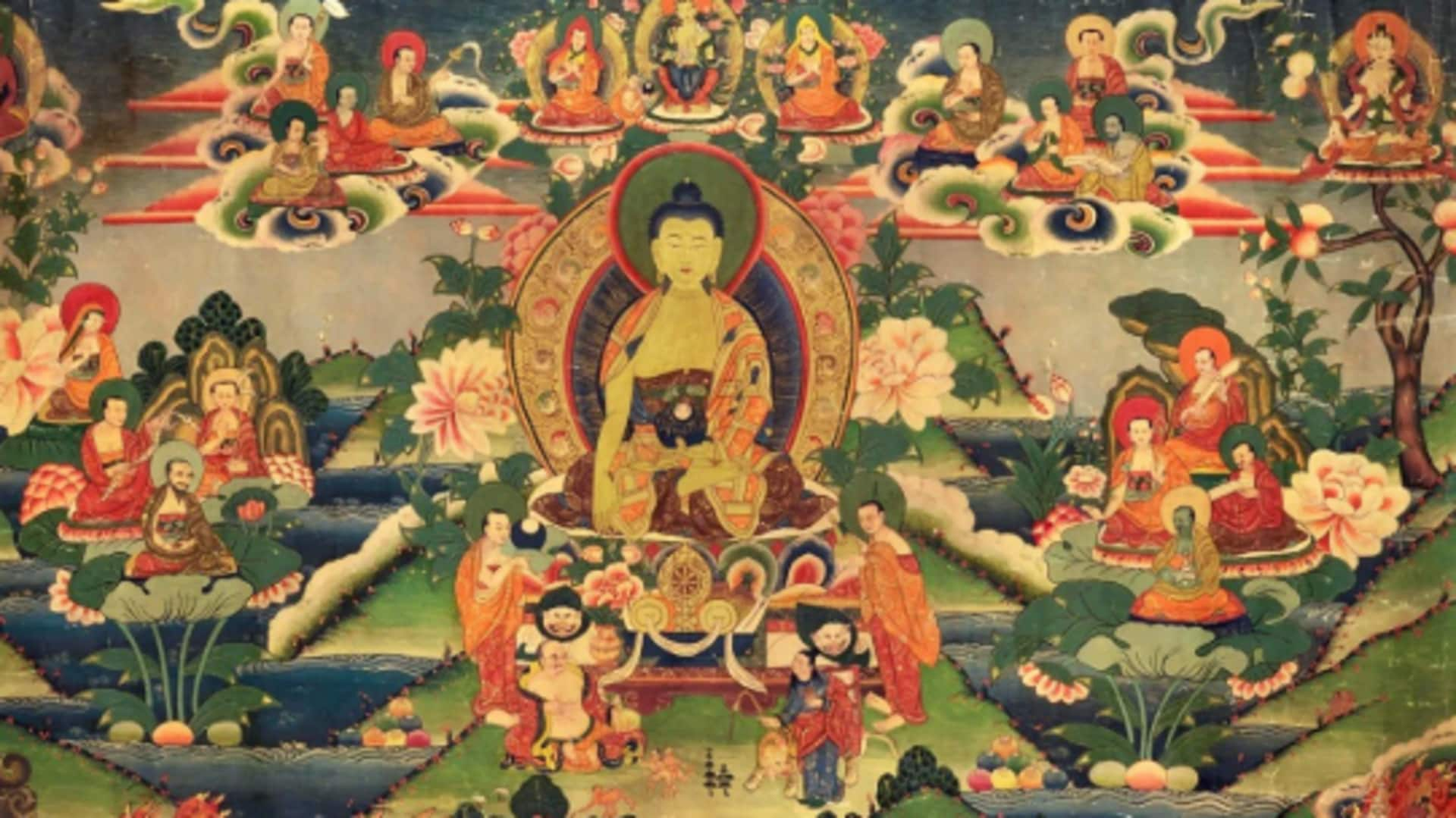
Exploring thangka: Tibetan Buddhist silk painting art form
What's the story
Thangka is a traditional Tibetan Buddhist art form characterized by intricate silk paintings. They aren't just decorative, but important religious symbols and teaching tools. Thangkas are generally made on cotton or silk applique and portray deities, mandalas, or scenes from Buddhist teachings. Making a thangka requires precision and strict adherence to guidelines, making it a revered practice among artists and practitioners alike.
#1
Historical origins of Thangka
The origin of thangka painting dates back to the seventh century in Tibet. Initially inspired by Indian art forms, thangkas developed over time to bring Chinese and Nepalese influences. These paintings served as portable shrines for monks moving from region to region. Historically, thangkas contributed to preserving Buddhist teachings through visual representation.
#2
Materials used in thangka creation
Creating a thangka is no easy task. Artists use cotton canvas or silk fabric as a base, and natural pigments from minerals and plants to ensure that the colors are long-lasting and vibrant. Gold leaf is usually applied to highlight certain features, adding depth and richness to the artwork. The choice of materials reflects the spiritual importance attributed to each piece.
#3
Techniques involved in Thangka painting
Thangka painting requires mastery of various techniques such as sketching, outlining, coloring, and shading. Artists follow stringent iconographic rules that define the proportions and symbolism of every composition. The painstaking process begins with sketching an outline with charcoal/pencil. Thereafter, artists apply layers of color with attention to detail, ensuring that each piece meets high standards.
Tip 1
Cultural significance of thangkas today
Today, thangkas transcend their religious context and are culturally significant. They are globally appreciated for their artistic value while also acting as a means of educating people about Tibetan culture and the rich heritage of Buddhism. Collectors across the world hunt for authentic pieces due to the historical relevance and exquisite craftsmanship exhibited by skilled artisans over generations.